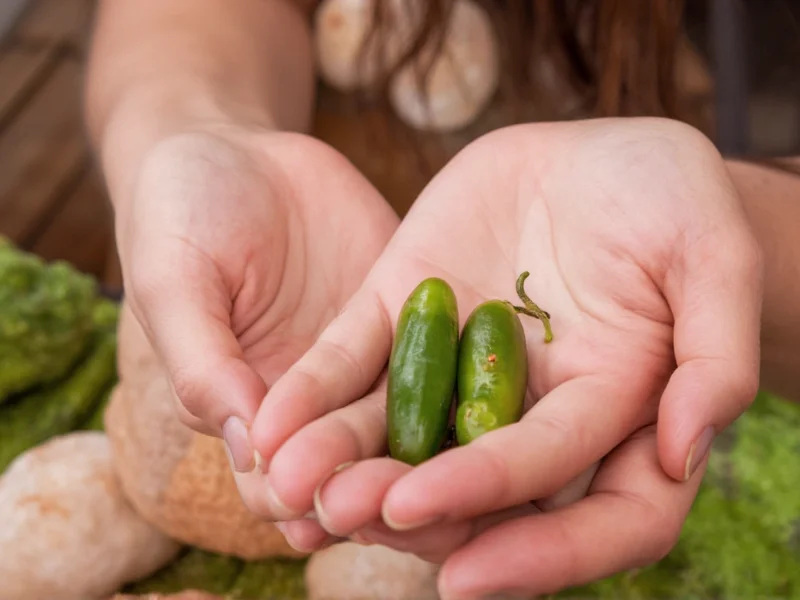Why Jalapeño Oil Sticks to Your Skin
When you handle jalapeños, the burning sensation comes from capsaicin—the oily compound responsible for their heat. This substance is hydrophobic, meaning it repels water. That's why simply washing with water often makes the burning worse by spreading the oil around your skin.
Most Effective Methods to Remove Jalapeño Residue
Understanding capsaicin's oil-based nature is key to finding effective solutions. Here are the most reliable methods ranked by effectiveness:
| Method | Effectiveness | Time Required | Accessibility |
|---|---|---|---|
| Oil + Soap Wash | ★★★★★ | 2-3 minutes | High (kitchen staples) |
| Alcohol-Based Sanitizer | ★★★★☆ | 1-2 minutes | High (common household item) |
| Dairy Soak | ★★★☆☆ | 5-10 minutes | Moderate (requires milk/yogurt) |
| Baking Soda Paste | ★★★☆☆ | 3-5 minutes | High (pantry item) |
Oil-Based Removal Technique (Most Effective)
This method works because "like dissolves like"—oil dissolves the capsaicin oil on your skin:
- Apply vegetable oil, olive oil, or even peanut butter to affected areas
- Gently rub for 30-60 seconds to break down capsaicin
- Wipe off excess oil with a paper towel
- Wash thoroughly with soap and warm water
- Repeat if necessary until burning sensation subsides
Alcohol-Based Solutions
Alcohol breaks down capsaicin effectively:
- Apply hand sanitizer (at least 60% alcohol) and rub hands for 30 seconds
- Alternatively, use rubbing alcohol on a cotton ball to wipe affected areas
- Follow with soap and water to remove residue
This approach works well for how to get jalapeño burn off hands quickly when you need immediate relief.
Dairy Products for Capsaicin Neutralization
Milk proteins bind to capsaicin:
- Soak hands in cold milk for 5-10 minutes
- Apply plain yogurt directly to burning areas
- Rinse with cool water afterward
This method proves particularly effective for removing jalapeño oil from sensitive skin.
Baking Soda Paste Alternative
Create a mild abrasive paste:
- Mix 2 tablespoons baking soda with enough water to form a paste
- Gently scrub hands for 1-2 minutes
- Rinse thoroughly with cool water
This approach helps with how to stop jalapeño hands from burning through gentle exfoliation.
What NOT to Do with Jalapeño Burns
Avoid these common mistakes that worsen the situation:
- Don't use hot water—heat opens pores and increases absorption
- Avoid touching your face—especially eyes and nose where skin is more sensitive
- Don't scrub aggressively—this damages skin barrier and spreads oil
- Never use bleach or harsh chemicals—this creates dangerous reactions
Understanding why jalapeño stays on hands after washing prevents these counterproductive actions.
Prevention Tips for Future Pepper Handling
Professional chefs and home cooks use these proven prevention strategies:
- Wear nitrile gloves (latex doesn't block capsaicin effectively)
- Apply a thin layer of cooking oil to hands before handling peppers
- Use a dedicated cutting board for spicy peppers
- Wash knives and surfaces with soapy water immediately after use
- Consider using pepper corers to minimize direct contact
These techniques address the common concern about how to handle jalapeños without burning hands.
When to Seek Medical Attention
While most jalapeño burns resolve with home treatment, consult a healthcare provider if you experience:
- Severe blistering or skin damage
- Burning sensation lasting more than 24 hours
- Signs of infection (increased redness, swelling, pus)
- Difficulty breathing (if capsaicin was inhaled)
For jalapeño in eyes treatment, immediately flush with cool water for 15 minutes and seek medical attention if irritation persists.











 浙公网安备
33010002000092号
浙公网安备
33010002000092号 浙B2-20120091-4
浙B2-20120091-4